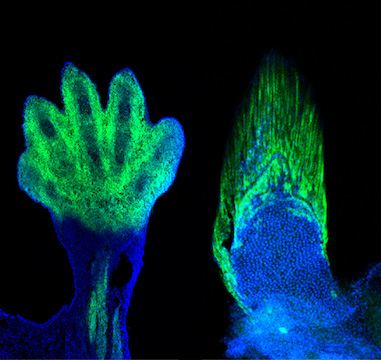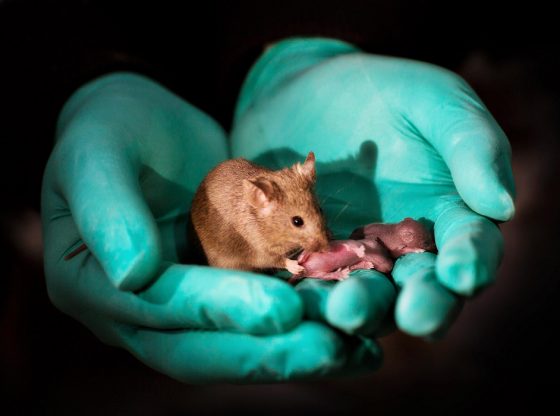
Our fingers and toes are thought to be a further development of the fish fins of the first land-living animals. New research shows that evolution succeeded thanks to a genetic reprogramming of cells fins.
Researchers from the University of Chicago who has studied which genes were involved when the fish fins became fingers and paws for the first terrestrial vertebrates.
This evolutionary process has been a mystery to scientists until now. It was previously thought that so-called endoskeleton in the fins through evolution converted to toes and fingers of the mammals. But it has still been a genetic mystery how this transition from fins to fingers actually progressed.
CRISPR
Now, however, researchers found the solution, using the new genetic technology CRISPR / Cas9 (check out the CRISP tag to this article below for more information).
Simplified one could say that the fish paired fins on their abdomen is made up of two kinds of skeletons. An endoskeleton at the base of the fin is. This is initially cartilage but later develop into bone. On the outside of the endoskeleton are the fish fins, or what is called rays, a form of an extra skeleton.
Ray Disappearance Was Key

When the first amphibious fish began venturing onto land about 400 million years ago their fish fins disappeared. It is thus cartilage that evolved to fingers and toes of for all mammals alike, including humans. However, it has been unclear what happened to the fish fins.
But with the help of genetic engineering, the researchers discovered that the genes for fish fins are the same genes that are responsible for our fingers and toes. When the researchers knocked out genes called Hox13 of a zebrafish – genes that researchers already thought played an important role in laying down fin rays – the growth halted and instead the endoskeleton became larger and the small bones made of cartilage fin increased in number.
None of the mutants grew fully fledged feet, Shubin notes, but some possessed “finger fins” made of the same kind of bone that builds fingers and toes in tetrapods. “As a paleontologist I studied and trained thinking these are two different kinds of bones that are completely unrelated developmentally or evolutionarily,” says Shubin. “These results challenge that assumption.”
The conclusion is that fish fins did not at all just disappear without a trace. On the contrary, this change has been the whole key to the development of our powerful fingers and toes.
____________
CRISPR’s hopeful monsters: gene-editing storms evo-devo labs
________________________






















